The artist Maurizio Cattelan's provocative magazine Toilet Paper is known for surrealistic, high-gloss photos like this one. Looking to curl up with a good art book? We’ve chosen 10 slated to be published early this year that are worth holding, dog-earring, and, yes, displaying on coffee tables. Here are exhibition catalogues, monographs, a collector’s biography, a magazine-cum-artist’s book, and an approachable academic tome that each challenge and charm us in their own way.
MAURIZIO CATTELAN & PIERPAOLO FERRARI: TOILET PAPER Published by Freedman Damiani (February)
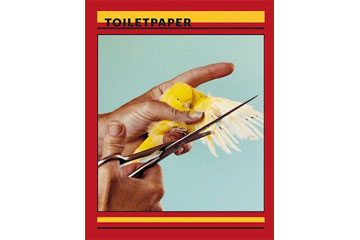
Sharp-tongued art-world jester Maurizio Cattelan may have announced his retirement from making art in 2012, but his surrealistic visual sensibility has been fully on view through one of his more enterprising ongoing projects: the magazineToilet Paper, created in collaboration with photographer Pierpaolo Ferrari. With no text to explain the often disturbing, always impeccably composed scenarios, the hundreds of color photo spreads marry the slick look of commercial magazines to the uncanny effect of tableaux vivants. We encounter diners Saran-wrapped around a table, an ear floating in a bowl of yellow soup, a somber family posed coddling and cosseting a microwave as if it were a newborn. This book is worth some archly tender love as well.
IN THE TEMPLE OF THE SELF: THE ARTIST’S RESIDENCE AS A TOTAL WORK OF ART Published by Hatje Cantz (Available)
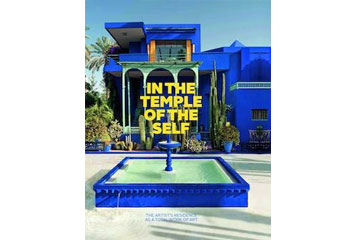
Home is where the art is. From mad wallpaper-maker William Morris’s Red House in Bexleyheath to Kurt Schwitter’s fabled Merzbau in Hanover (which was destroyed during an Allied bombing raid) to Max Ernst’s remote deserst compound in Arizona, the fantastically designed homes in this gorgeously illustrated book are important expressions of the artists’ inner lives. At once an admirable work of architectural history—the structures range from stark garrets to garish mansions—the book dissolves the line between the artistic production and lived experience of some of the most influential artists in the 19th and 20th centuries, providing intimate studies of their character.
PETER HUJAR: LOVE & LUST Published by Fraenkel Gallery (February)

The critic Susan Sontag wrote that Peter Hujar’s photographs manage to “convert the whole world into a cemetery,” and it is with an equal measure of melancholy and tenderness that Hujar observes the subjects of Love & Lust. The nude figures, though exposed and vulnerable, somehow manage to preserve their interiority and self-possession when encountering Hujar’s lens. Another photographer, Nan Goldin, said of Hujar’s work, “Looking at his photographs of nude men, even of a naked baby boy, is the closest I ever came to experience what it is to inhabit male flesh.” Try that on for size.
21ST-CENTURY PORTRAITS Published by National Portrait Gallery (February)

Before we christen it the age of the selfie—as many critics have bitterly called it—spend some time with the 150 photographs illustrated in 21st-Century Portraitsthat explore the recent developments in representing identity across the globe. The work ranges from that of Sophie Calle and Rineke Dijkstra to Marlene Dumas and Julian Opie, tracing the varying and sometimes radical strategies of artists working today to depict the human figure in its many forms. Evidently, the grand trandition of representional portraiture is alive and well in the digital era.
ARTHUR C. DANTO: REMARKS ON ART AND PHILOSOPHY Published by A.S.A.P. (February)
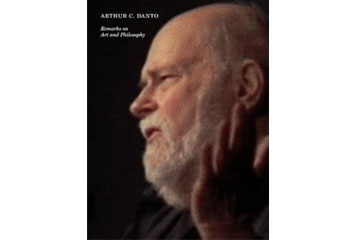
Since his famous 1964 essay “The Artworld,” Arthur Danto, the Columbia professor of philosophy and art critic of the Nation who passed away last year, engaged deeply with the art of his times. In fact, his writing career began in the Stable Gallery in New York when he saw Andy Warhol’s plywood Brillo Box and asked what made it any different from the cardboard soapbox it imitated. In other words, what made it art? This collection of lectures given from 1997 to 2009 at Arcadia Summer Arts Program is at once accessible for the uninitiated to the philosophic tradition and, simultaneously, a rich resource for the informed academic interested in the mind of one of the most formidable aesthetic philosophers of the 20th century, whose investigations prompted by Warhol's iconic Pop sculpture led him to declare we had arrived at "the end of art."
MARCEL DZAMA: PUPPETS, PAWNS AND PROPHETS Published by Hatje Cantz/ David Zwirner (Available)

A lone female terrorist, a rabbit baring arms, a troupe of Modernist ballerinas: the stark illustrations by Canadian artist Marcel Dzama could be scenes excerpted from a carnival or else glimpses into a bizarre nightmare—drawing together a cast of characters at once cartoonish and menacing. This book, which intriguingly was edited by Norman Rockwell biographer Deborah Solomon, includes work from his exhibition at David Zwirner in London in 2013, faithfully reproducing Dzama’s muted pallet and his macabre explorations played out in his drawings, collages, dioramas, paintings, sculptures, and recent forays into film.
ROBERT INDIANA: THE MONUMENTAL WOODS Published by Galerie Gmurzynska (January)
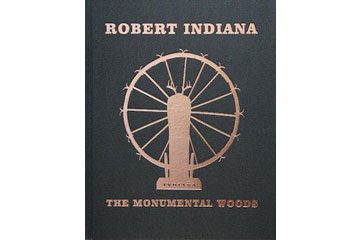
Four letters have come to define—or perhaps confine—the career of American artist Robert Indiana: LOVE. Correcting this offense, this comprehensive volume documents over five decades of radically different wood sculptures by the artist, created from his time in a New York artist community alongside friends Ellsworth Kelly and Agnes Martin to his later retreat to a remote island off the coast of Maine. In an interview with Artspace, Indiana notes that he began to combine his graphic text painting with classical sculptural forms once he left his urban environs: “How could I resist? When I lived on Coenties Slip, the wood was outside my front door. When I moved to the Bowery, there was no wood outside the front door, so I primarily dealt with paintings. Then when I came to Vinalhaven, there was wood outside my front door again, so I began making the sculptures again.”
FRANCESCA WOODMAN: WORKS FROM THE SAMMLUNG VERBUND Published by D.A.P./ Distributed Art Publishers, Inc. (April)
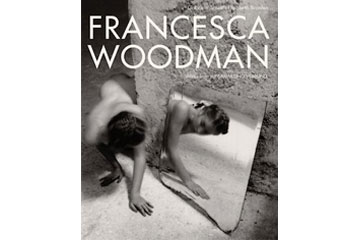
Posthumous critical esteem for the photographer Francesca Woodman, who took her life at age 22, has not waned since her exhibition at the Guggenheim in New York in 2012. This lavish monograph places the formally eerie gothic compositions by Woodman in the rich tradition of American photography, examining her use of props and her unique manipulation of space as a stage for her theatrical experiments. Featuring 20 previously unpublished works from the collection of Sammlung Verbund in Vienna, the book is the most comprehensive to date on the artist and includes a detailed biography of her tragically short but enormously creative life.
DAVID ALTMEJD Published by Damiani/Andrea Rosen Gallery (March)

Something of a cross between the theatrical mannequins of Nick Cave and the dystopian ecological concerns of Mark Dion, the totemic, room-filling sculptures of the artist David Altmejd arise from idiosyncratic assemblages of plaster, plants, shards of mirrors, crystals, gold chains, thread, and taxidermied animals. This marriage of spooky beauty to evolutionary science plays out a struggle between life and death, the spiritual and the physical, and the banal and the sublime. Altmejd writes in this first-ever catalogue: “I see my work as post-apocalyptic. The basis is disaster, but then it’s about how things grow on top of it.” This hefty tome provides an unusual window into the wildly complex themes of the artist's work.
WILLIAM N. COPLEY: REFLECTION ON A PAST LIFE Published by Walther König, Köln (January)
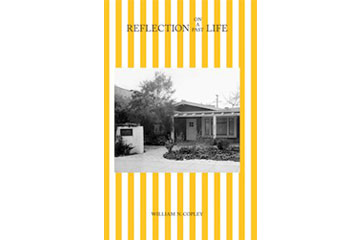
When the late early 20th-century painter, collector, and dealer William N. Copley gossips, it becomes the stuff of art history. Originally written in 1976, Reflection on a Past Life chronicles Copley’s encounters with the expatriate Surrealists in Los Angeles after World War II, such as Man Ray, Max Ernst, Marcel Duchamp, and René Magritte. After inheriting a fortune as a young man, he opened a gallery in Beverly Hills to exhibit their work. But the experiment flopped, and he went on to amass a private collection, which sold for what was, in 1979, the highest total of a single owner’s private collection in the United State. All the while, Copley—working under the name CPLY—made his own highly idiosyncratic, expressive, often erotically charged art, which has in recent years come to be an important influence on contemporary artists like Bjarne Melgaard (who staged a show with his work in 2013). This book tells Copley's fantastic story.
By Noelle Bodick
Via Artspace


